This discussion and review contains spoilers for Star Trek: Strange New Worlds season 2, episode 6, “Lost in Translation,” on Paramount+.
“Lost in Translation” is, like a lot of the second season of Strange New Worlds, by turns compelling and frustrating. The episode approaches compelling ideas and themes, only to pull back against them at the last minute in a way that underscores the fundamental limitations of the show’s core premise.
The plot of “Lost in Translation” is undeniably interesting. It is another example of the second season directly engaging with contemporary social and political issues. As with the argument between James T. Kirk (Paul Wesley) and La’an Noonien-Singh (Christine Chong) over two competing visions of the future in “Tomorrow and Tomorrow and Tomorrow” or the Kelar’s inability to reckon with their own past in “Among the Lotus Eaters,” “Lost in Translation” is built around a charged and timely allegory.
While the Enterprise is supervising the construction of a deuterium refinery inside a stellar nursery, Nyota Uhura (Celia Rose Gooding) picks up a strange signal. She then begins to experience a series of horrific and paranoid delusions that shatter her sense of reality. Lieutenant Ramon M’Baal (Michael Reventar) from the USS Farragut experiences the same phenomenon. He attempts to sabotage the refinery and quickly turns violent, as Uhura wonders whether she is being driven insane.
Whatever this strange signal is, it floods Uhura and Ramon’s mind with nightmarish and apocalyptic imagery. It breaks any tether that they have to reality. “It isn’t real,” Ramon repeats to himself. “It’s not real.” Kirk provides reports from Ramon’s colleagues that the officer was “seeing things that weren’t there.” While the characters try desperately to get through to their tormented colleague, Doctor Joseph M’Benga (Babs Olusanmokun) warns, “He might not understand us.”
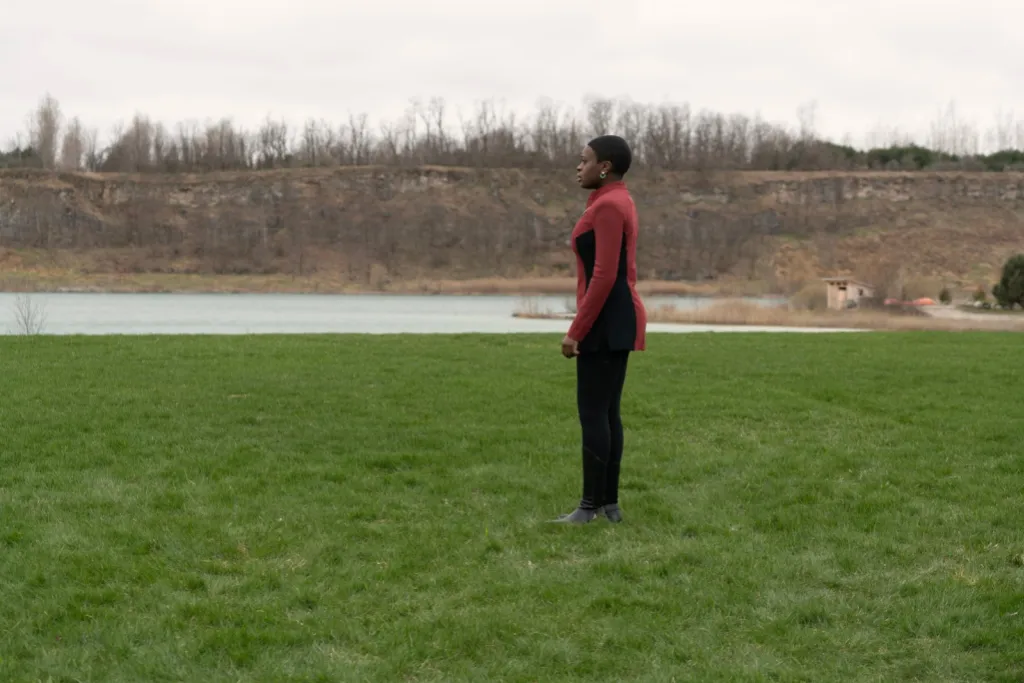
The idea of a strange signal that drives those who consume it insane has a fairly powerful resonance in the context of modern pop culture, particularly for a show that has rooted its contemporary sensibility so firmly in relation to the Capitol Riots in January 2021. The Star Trek franchise has always existed in conversation with the culture that produced it, with the original Star Trek having its own complicated relationship to contemporary issues like the Vietnam War or youth culture.
As allegories go, “Lost in Translation” is not especially subtle. It recalls the impact that modern cable news can have on the people who passively consume it, most obviously Fox News. There are plenty of news stories about what has been termed “Fox News Brain,” with people talking about how the network has altered the personalities of older relatives, making them more aggressive, irrational, and belligerent, altering their sense of reality, and making it hard to communicate with them.
There are moments when “Lost in Translation” is especially overt. Uhura has a revelation about what is happening when she plays back a recording of Lieutenant Hemmer (Bruce Horak) talking about how a strong charge can “burn out the receiver.” Many Fox News viewers left the network playing so long that its logo would burn itself into their television sets, a phenomenon so common that Succession made a joke about it.
It’s a great setup, but “Lost in Translation” doesn’t know how to pay it off. The issue ultimately turns out to be one of miscommunication. Uhura figures out that the signal is coming from living organisms inside the nebula, a familiar Star Trek trope that Voyager employed repeatedly in episodes like “The Cloud” and “Bliss.” It turns out that the problem can be solved by simply listening. In the episode’s closing scene, Kirk muses that “all it took was a good listener.”
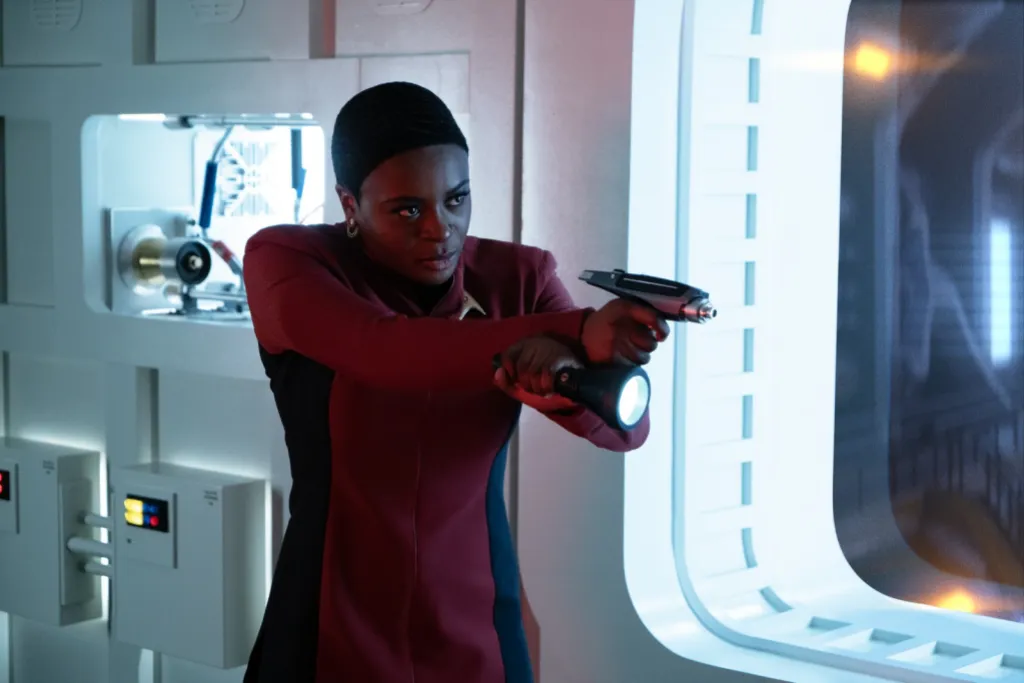
There’s a clumsiness to this. It speaks to a recurring challenge facing Strange New Worlds. The show looks at the chaos of the modern American cultural landscape and argues for something akin to “both-sides-ism.” That was the crux of the show’s premiere, even after playing footage of the Capitol Riots. Strange New Worlds believes these existential threats will go away if people listen to each other, ignoring the reality that much of this current tension is the result of cynical bad-faith actors.
It is a frustrating misfire, because there is a lot to like in “Lost in Translation.” It frequently wanders up to the line of a compelling dramatic or thematic revelation, only to pull back at the last minute. There are tensions the show can’t resolve. This is evident in how the episode approaches the idea of the deuterium refinery, broaching the long-standing contradiction within the franchise over whether Starfleet is an exploratory or expansionist power.
Captain Christopher Pike (Anson Mount) monologues about the importance of the refinery. “It’s not just a gas station, Lieutenant,” he tells Erica Ortegas (Melissa Navia). “It’s right at the edge of the frontier. It unlocks half the Quadrant. It will be a jumping-off point for the next great age of exploration.” However, Lieutenant Spock (Ethan Peck) suggests Starfleet’s more cynical reasons for building it, “I assumed Starfleet’s primary motivation was the nebula’s proximity to Gorn space.”
Strange New Worlds struggles to reconcile the contradiction between the fantasy of Starfleet as a benign organization of explorers and the reality that it is a military power. This is apparent with the Gorn. The Gorn were introduced in “Arena,” illustrating Starfleet’s imperialist impulses. The Gorn challenged the idea that aliens were monsters just because they didn’t look human. However, Strange New Worlds has consistently portrayed them as monsters in episodes like “Memento Mori” and “All Those Who Wander.”
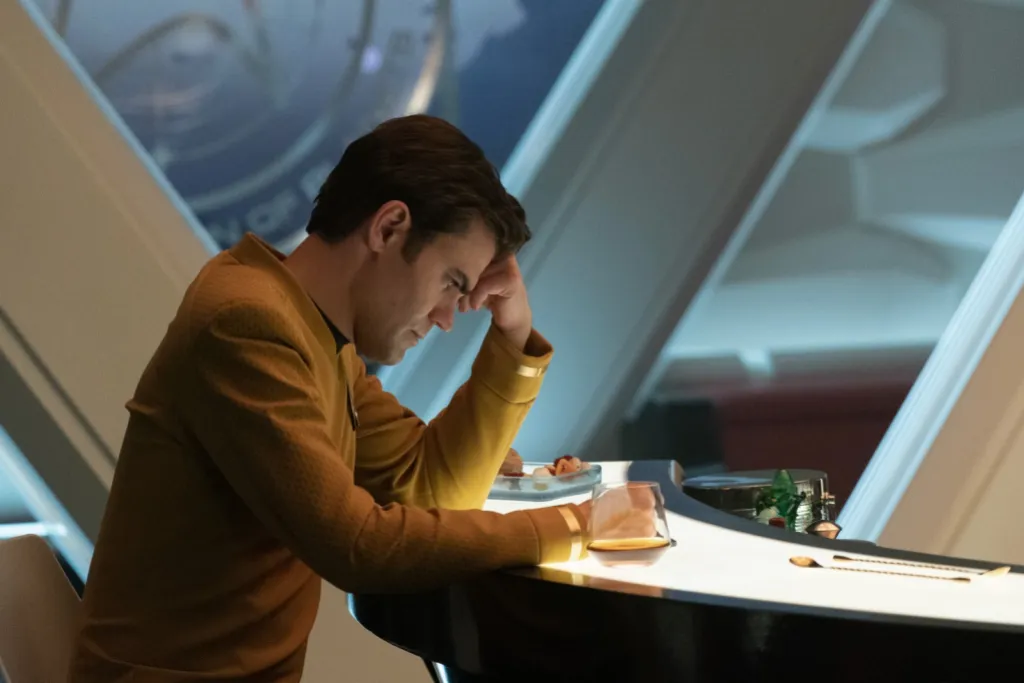
Pike is forced to concede that the refinery is a tactical resource rather than anything more poetic. “Sadly, you’re probably right,” he tells Spock. “Their presence is growing. This will help us counter it.” As such, it’s a pointed statement that “Lost in Translation” ends with Pike destroying the refinery and implicitly rejecting its expansionist purpose, but the episode hedges its bets. Pike assures the crew that Starfleet will just “build a new gas station someplace else.” There’s contradiction, but no resolution.
This plays out in other aspects of “Lost in Translation.” It marks the return of Bruce Horak as Hemmer, following the character’s death in “All Those Who Wander.” Wisely, “Lost in Translation” chooses to respect Hemmer’s death, rather than resurrecting him in the same way that Discovery resurrected Doctor Hugh Culber (Wilson Cruz). Thematically, a large part of “Lost in Translation” is about the idea of having to move on from a loss and accepting the inevitability of change.
Commander Pelia (Carol Kane) suggests to both Uhura and Una Chin-Riley (Rebecca Romijn) that she is a constant reminder of Hemmer’s absence. “How come you never talked to me before?” she asks Uhura, as Uhura replays footage of Hemmer. Pelia answers her own question later, on the shuttle with Chin-Riley. “I’m a reminder that your friend died and I replaced him,” she explains. “And every time you see me, it dredges up all that sadness.” Uhura even confronts her own parents’ death.
It’s a lovely idea, and it is something that Strange New Worlds would do well to internalize. The past is the past. The future lies ahead. It is important to respect what came before, but also to move on from it. Hemmer was an interesting character and Horak was a charming performer, but that doesn’t mean that Pelia can’t be fun in her own right. Given how beholden Strange New Worlds can be to fan service and pandering, it feels like a big deal for the show to articulate this idea.
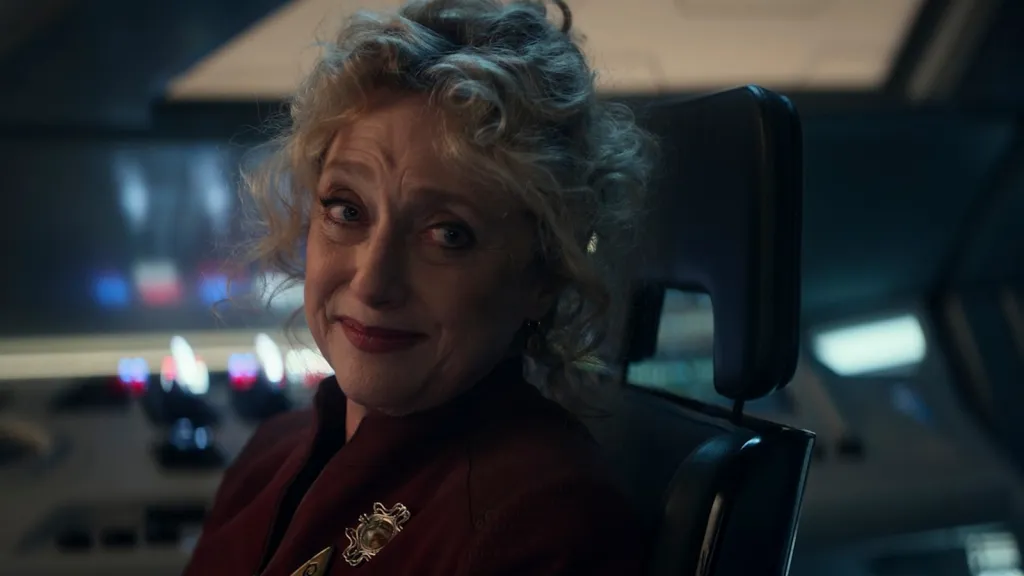
However, Strange New Worlds cannot help itself. “Lost in Translation” is an episode about accepting that the past is gone, but it’s also an episode about how fun it is to hang out with James T. Kirk. When Kirk beams on board, director Dan Liu’s camera lovingly tracks up his materializing body. Despite “Tomorrow and Tomorrow and Tomorrow” setting up Kirk’s dynamic with Noonien-Singh, “Lost in Translation” pushes Kirk back towards his old Star Trek castmates, Uhura and Spock.
With only 10 episodes in a season, Strange New Worlds struggles to give enough space to its own cast members like Ortegas or Chapel (Jess Bush), but “Lost in Translation” devotes an entire subplot to the relationship between two recurring guest stars, James T. Kirk and his brother George Samuel Kirk (Dan Jeannotte). There are enough stories about Kirk already out there, but Strange New Worlds can’t resist that urge to resurrect and recreate the past, chasing the siren call of nostalgia.
It doesn’t matter that Kirk and Spock have had no meaningful interaction within “Lost in Translation;” the episode still understands the power of the closing image of Kirk, Spock, and Uhura sitting at a table together. It is the new “triad” of the J.J. Abrams Star Trek reboots, with Uhura replacing McCoy. “Lost in Translation” has done nothing to earn that closing shot — Spock literally just wanders over randomly to Kirk and Uhura’s table — but it treats it with an incredible symbolic weight.
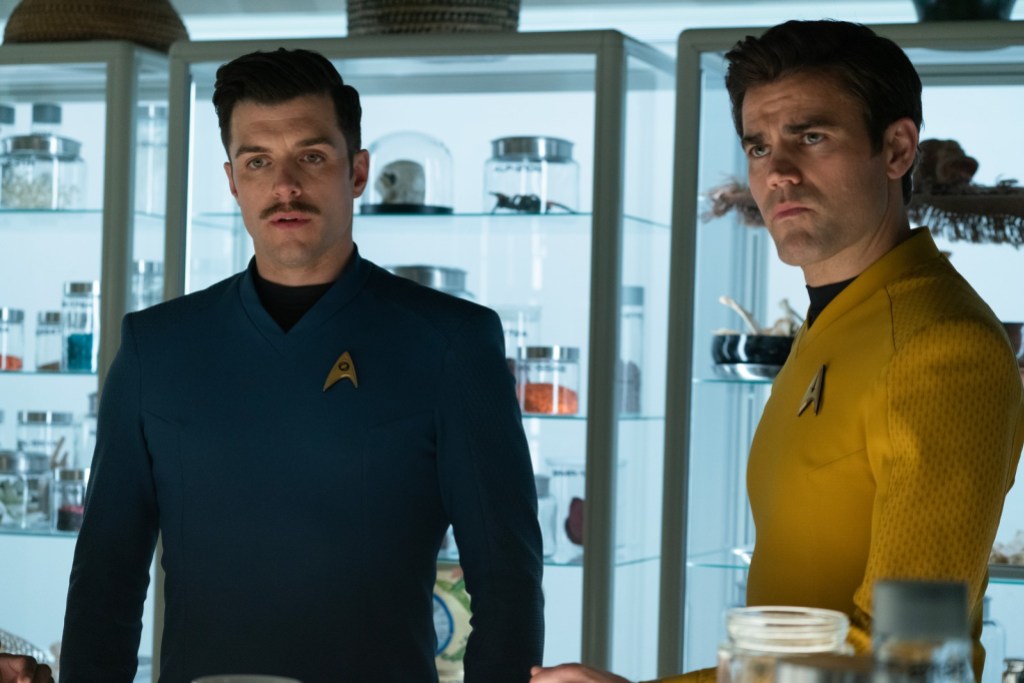
It is a choice that undermines any point that “Lost in Translation” might try to make about the importance of letting go of the past and moving on. For all that Pelia might argue that Uhura and Chin-Riley should learn to accept her, there’s a creeping inevitability that Strange New Worlds will brush Carol Kane’s delightfully inspired performance aside to replace the septuagenarian actor with a generic CW hunk doing a highly questionable accent in the role of Montgomery Scott.
There’s a clumsiness to “Lost in Translation” even beyond its themes and plot arcs. It seems strange that Kirk would let Uhura carry a phaser pistol while hunting Ramon, given she had just broken his nose during one of her hallucinations. Similarly, it’s odd that the complete evacuation of the refinery seems to take about three seconds at the climax. These aren’t episode-breaking issues, but they speak to a sloppiness in the story’s construction on a simply scene-by-scene basis.
As with a lot of the season around it, “Lost in Translation” finds Strange New Worlds grappling with bigger ideas than it did during its first season, but ultimately trapped by a lack of commitment. Strange New Worlds might yet be capable of great things. It just needs more refinement.

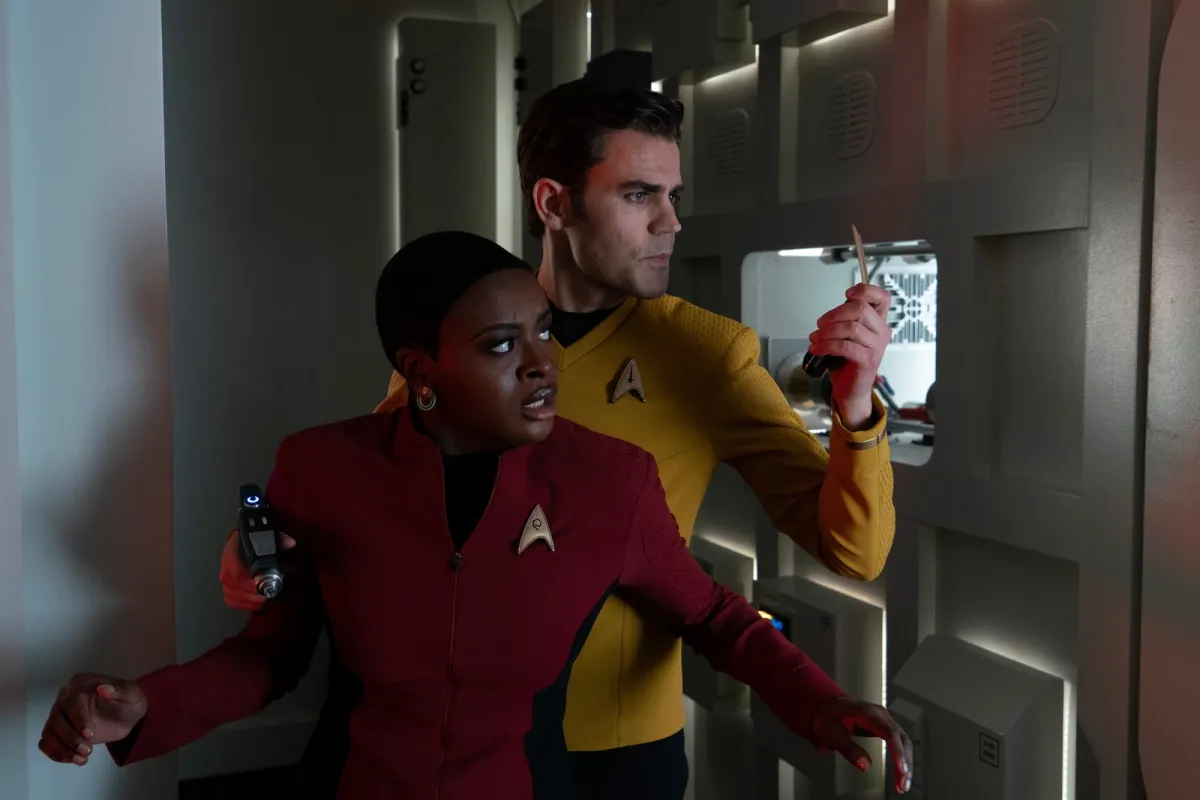




Published: Jul 20, 2023 10:00 am